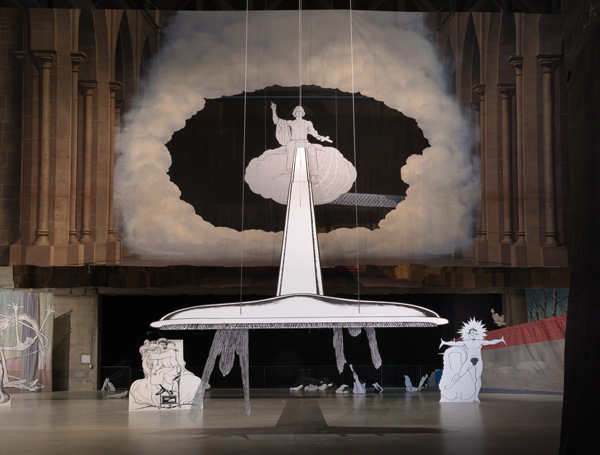NEW MUSEUM IN TOWN
Welcome Marciano Art Foundation on Wilshire Boulevard! It’s the new museum that features the contemporary art collection of Paul and Maurice Marciano, two of the brothers who founded the hip jeans company Guess and became zillionaires. The museum sits in a former Scottish Rite Masonic temple that stretches a city block, and opened to the public on May 25. Maurice seems to be the man running the show, as he opened the press conference a few days earlier.
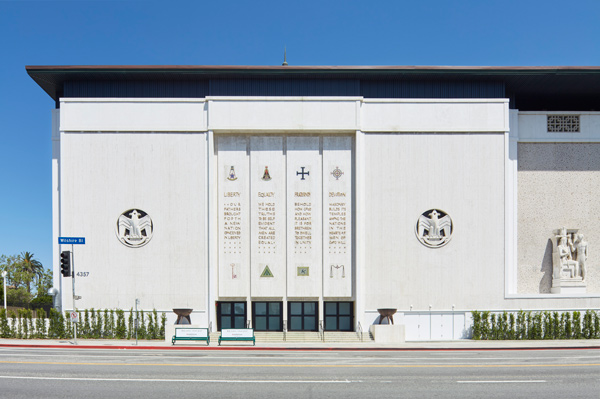
Museum facade on Wilshire Blvd, Yoshiro Makino, Courtesy of wHY and Marciano Art Foundation
The space is impressive, at 100,000 square feet, with selections from the permanent collection in two parts of the museum, and “Jim Shaw: The Wig Museum” in what was formerly the theater. The Shaw exhibit is long overdue; it’s the first museum show in LA of our local art hero—yes, hard to believe, but true. It’s also hard to imagine what museum could have contained some of these installations, which require triple-height ceilings, such as the one showing a cloud-borne George Washington, or perhaps God, issuing a giant vacuum cleaner from his loins. The machine is hovering up flailing souls. Here as elsewhere Shaw has re-used the elaborately painted backdrops found in the building—putting new paint on them, cutting into them. The smaller installations are also clever and fascinating—in one room, there’s a display of wigs—the Masons loved putting on little morality plays, replete with wigs, costumes and backdrops. The old wigs are interspersed with Shaw’s own ever-quirky inventions.
Elsewhere during the press preview a scenic painter was putting finishing touches around the mezzanine for part of Alex Israel’s wall mural. When Israel spotted him, he quickly told the man to stop, lest anyone realize Israel is not the one whose hand hath made the work.
NEA REVISITED
This spring we learned a couple valuable lessons from the struggle over the National Endowment for the Arts (NEA)—the Far Right hates artists, but the NEA has successfully strategized its grantsmanship to survive. At least for now. Earlier this year the Empire—er, I mean the White House—proposed a stopgap federal budget which would have eviscerated the NEA, NEH (National Endowment for the Humanities) and CPB (Corporation for Public Broadcasting). In May, Congress reinstated those agencies—indeed, it added $2 million to the NEA, for a total annual budget of $150 million. However, that increase barely keeps up with inflation—currently 2.4%—and on May 23, the proposed White House budget for FY2018 again guts the NEA, and rings the death knell for CPB.
Why is the White House so eager to defund the NEA? Is it really because—as Office of Budget and Management Director Mick Mulvaney claims—giving money to the arts is patently unfair to American workers?

John Fleck, recently performing at this year’s LACE Benefit Auction. Fleck is one of the NEA Four, whose NEA grant was denied in 1990, photo by Lynda Burdick at Vibiana DTLA.
Or is it because the Far Right sees artists as troublemakers and hooligans, who like to disrupt and question the status quo? (That would be correct, actually.) The Far Right protects the status quo because they intimately benefit from it, and really, they’d like to wind the clock back farther, to a time when the NEA didn’t exist.
Fortunately, over the decades the agency has managed to win Congress to its side by giving grants to every state in the union, and to community groups, not individuals. In 2016 more than 350 arts programs in California received NEA grants, totaling over $9 million. This included everything from $10,000 to support an arts mentoring program in Venice to $99,500 to support a rural arts program in Fresno; in LA, there were grants to the Craft and Folk Art Museum and to East West Players.
The budget of the NEA is relatively tiny. It could be funded, in full or in part depending on whose estimate you take, if the First Lady actually lived in the White House, rather than in NYC. On the high side, it is estimated that the public is spending $500,000 to $1 million a day for security, etc., to look after Melania. In February NYC Police Commissioner James P. O’Neill stated that it costs $127,000 to $146,000 a day for this service, which jumps to $308,000 when His Lordship is in NYC. What has not been factored in is all those weekend trips to Mar-a-lago—NYC is not his only home away from home.
Dear Reader, feel free to call your Congressperson in support of the NEA. Yes, just dial away—the people who answer are keeping tabs on this, so it will matter.
R.I.P. ACME.
Well, it looks like another one of our stalwart galleries is biting the dust. ACME moved from Wilshire Boulevard to the Frogtown district, down by the LA River, last November—part of the flight from mid-Wilshire due to Metro construction—opening with shows by Jennifer Steinkamp and Daniel Cummings. Then in early June the gallery sent out a cryptic e-poster of a sunset over mountains with the words, “ACME./1994–2017/with appreciation and gratitude/thank you all!” When I called up Randy Sommer, one of the original founders along with Robert Gunderman, and asked whether it meant they were closing, Sommer said, “Sadly, it’s true. We’ve had some great reviews for our shows, but reviews don’t pay the bills.”
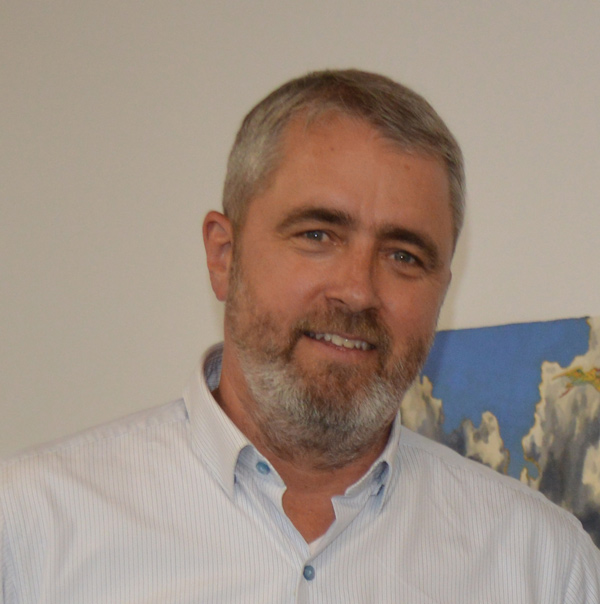
Robert Gunderman
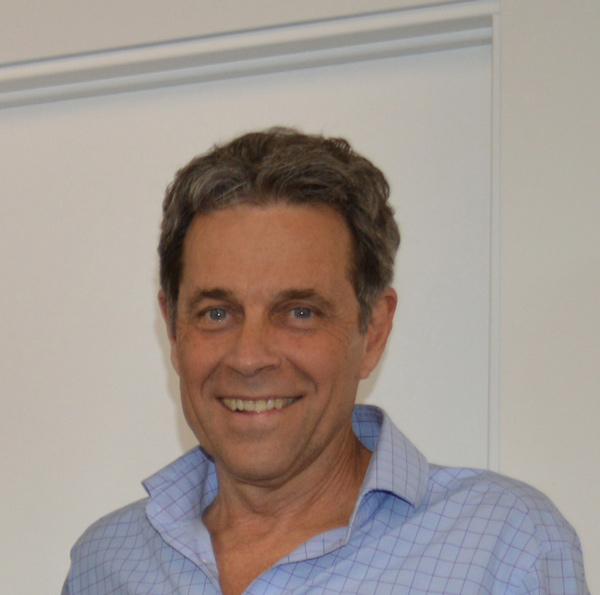
Randy Sommer
Like many galleries these days, especially in a time of increasing traffic congestion, they had trouble getting people to come to the gallery—although they had better visitorship in their most recent location. They did enjoy their new gallery, says Sommer, “It’s a very happening place.” On a Frogtown artwalk last year, I was impressed with the influx of architectural firms, fabrication shops and artists installed in the area—but there were no mainstream art galleries. ACME was the first, and for the time being, the last.
HERB ALPERT AWARD WINNERS
This is one of the most important awards given to artists in this country—the Herb Alpert Award in the Arts, an unrestricted grant of $75,000 given to five artists involved in Dance, Film/Video, Music, Theater and the Visual Arts. Every year it’s given out in a rather informal ceremony at Alpert’s office building in Santa Monica, attended largely by those involved in the arts. But alas, you can’t apply. You have to be nominated; then the list is reviewed by a jury of three experts in the field.
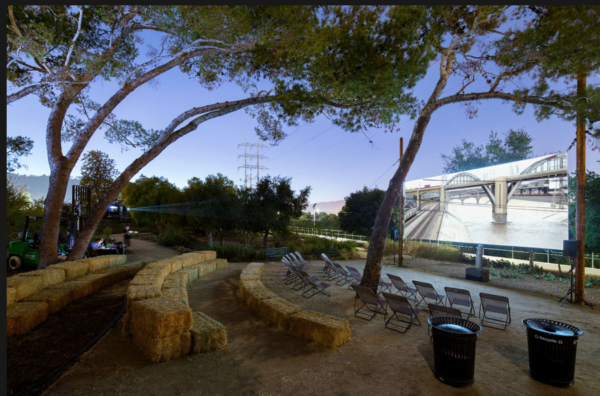
Kerry Tribe, Exquisite Corpse
This year the Visual Arts award went to Bay-Area artist Amy Franceschini, whose multidisciplinary practice often addresses environmental concerns. Closer to home, our own Kerry Tribe won the Film/Video award—well deserved. I thought her documentary for last year’s “Current LA” was probably the best work in that event. Exquisite Corpse took us on a rambling journey down the LA River, meeting with some of the quirky and wonderful folk who live along the way. I saw it during an evening projection in Sunnynook River Park—yes, so apt since we were right by the LA River. Congrats, Kerry! And thank you, Herb, for so generously funding these awards for 23 years.
EDITOR’S NOTE
Congratulations to Artillery contributor Liz Goldner
for awards in art criticism from the Orange County Press Club.

